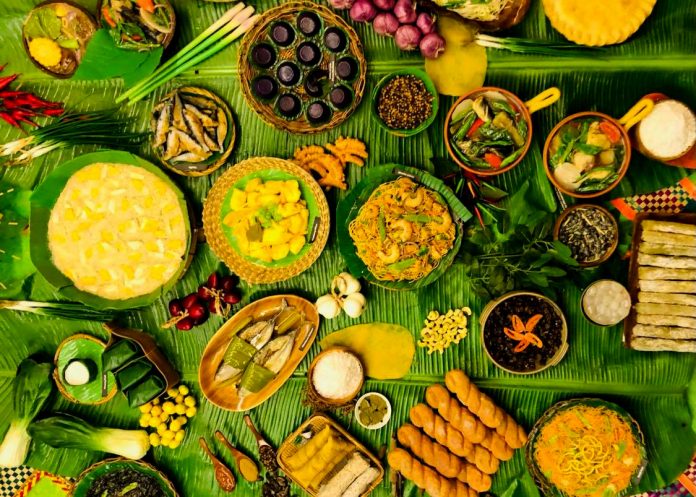Former Senate President Tito Sotto had long ago proposed how to ensure farmers’ incomes. Make government buy at least half of all farm produce. Then, sell those cheap in bulk at trading posts. Input the cost of labor, transportation and sundries in the selling price. National and local agencies won’t lose money. They would recover the initial funds and buy more goods with the rolling capital.
Agriculture Senior Undersecretary Domingo Panganiban might wish to study Sotto’s idea. He need not blame farmers for “just planting but not thinking of the market.” His Department of Agriculture will have a 40-percent budget increase of PhP46.5 billion next year, from PhP117.29 billion to PhP163.75 billion. That money would go a long way to helping farmers, fishers, and backyard chicken and hog raisers rise from penury. Agriculture can transform from over-importing to self-sufficiency. Consumers can enjoy cheaper food.
Sotto’s plan has been tried in other lands. By building a train network, India ensured transport of produce from farm to city. This was partly responsible for decades of bumper harvests of rice, wheat, barley, rye, corn, potato, pulses, jute and sugarcane. Same with Thailand.
Thai King Bhumibol did better in the 1980s. Summoning the best Thai chefs, he requested them to write basic recipes for the most popular Thai dishes: Tom Yum Goong (Spicy Shrimp Soup), Som Tum (Spicy Green Papaya Salad), Tom Kha Kai (Chicken in Coconut Milk), Gaeng Daeng (Red Curry), Pad Thai (Fried Noodles), Khao Pad (Fried Rice), and Pad Krapow Moo Saap (Fried Pork with Basil).
The king distributed the recipes to Thai eateries and communities overseas. Foreigners got introduced to Thai cuisine. The standardized recipes guaranteed the distinctive taste of Thailand.
But where to get the ingredients? The king had a ready scheme: replicate Japan’s one town-one product (OTOP) method.
He identified what crops and livestock were most suitable for each 76 provinces to raise. Towns were assigned specific vegetables and fruits: bean sprouts, soy, papaya, chili, onion, garlic, ginger, cassava, coconut, cabbage, lettuce, chayote, radish, sugarcane, salt, aside from rice. Cottage industries sprang up for shrimp paste, fish sauce, soy sauce and condiments. Large-scale poultry, piggery, goat and cattle-raising were encouraged, along with fish ponds and cages.
Agriculture boomed. Thai farmers became a formidable political class that can install or topple parliaments and prime ministers.
Adobo supposedly is the most popular Filipino dish for more than a century. Why Rizal never mentioned it in his many novels, short stories and essays is a puzzle, descendant Gemma Cruz Araneta wrote recently. What Rizal featured in “Noli Me Tangere” was tinolang manok (chicken stew). In chapter one, over dinner at Capitan Tiago’s house, Padre Damaso raged why he was served only chicken neck.
Sisig is becoming a global hit. Years ago, Ambassador to Washington Babe Romualdez reported how the sizzling pork cheek wowed diners across America to ask for second servings. Filipino envoys elsewhere made sure sisig was the fiesta feature.
For sisig, adobo and tinola to cross over the world, the Department of Trade and Industry suggests recipe standardization. Taking off from the book “Kulinarya,” DTI has assembled world class Filipino chefs for the task.
Foreign tourists want the taste of Filipino. Restaurateurs are only too willing to indulge them. Ten million overseas workers and five million emigrants can be ambassadors of “foodwill.”
They can serve up sinigang, dinuguan, kare-kare, lechon, crispy pata, humba, burong isda, bistek, longganisa, tocino. One won’t find lumpia shanghai or pancit canton in those Chinese cities; they’re Filipino concoctions. Balut and variations penoy, abnoy, and maalat are attractions. Not to forget bibingka, suman, kutsinta, puto, biko, sapin-sapin, tibok-tibok, puto maya, puto bumbong, palitaw, minatamis na kaong, and burong mangga. Halo-halô was originally Thai and gulaman Malaysian (gula melaka), but Filipinos perfected them.
Agriculture, trade, tourism and transport officials can get together to grow and distribute the ingredients. Food producers will have ready markets.
Jarius Bondoc is an award-winning Filipino journalist and author based in Manila. He writes opinion pieces for The Philippine Star and Pilipino Star Ngayon and hosts a radio program on DWIZ 882 every Saturday. Catch Sapol radio show, Saturdays, 8 to 10 a.m., DWIZ (882-AM).
The views expressed in this article are the opinions of the author and do not necessarily reflect the editorial stance of LiCAS.news.









